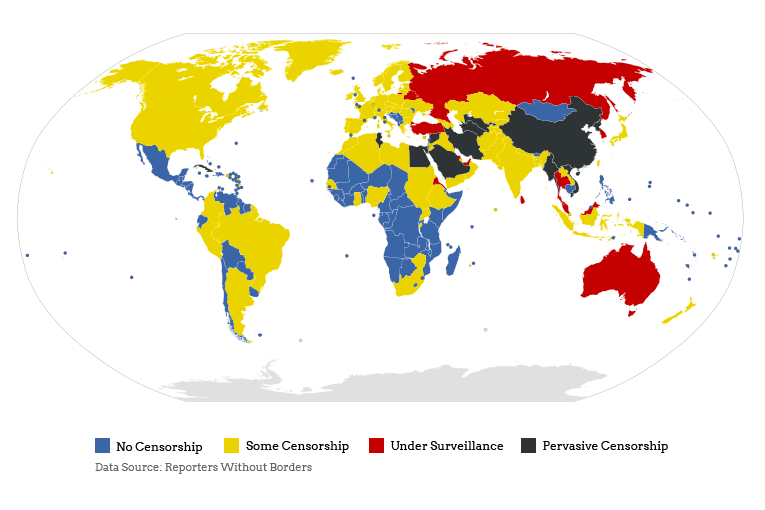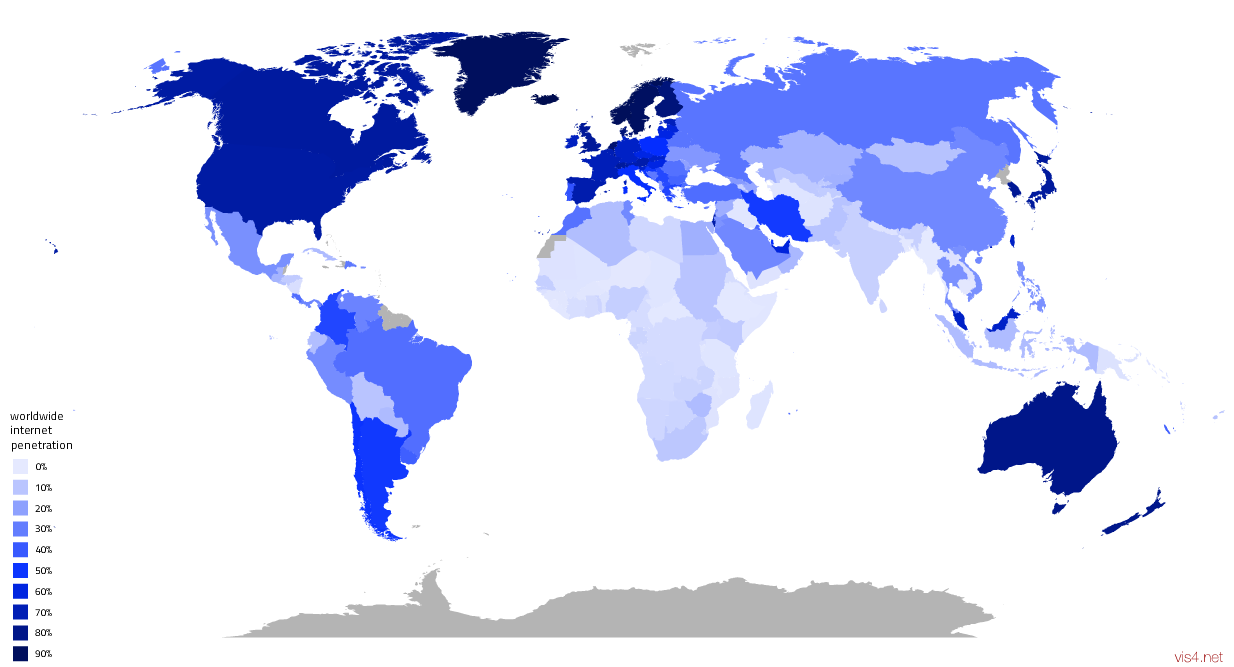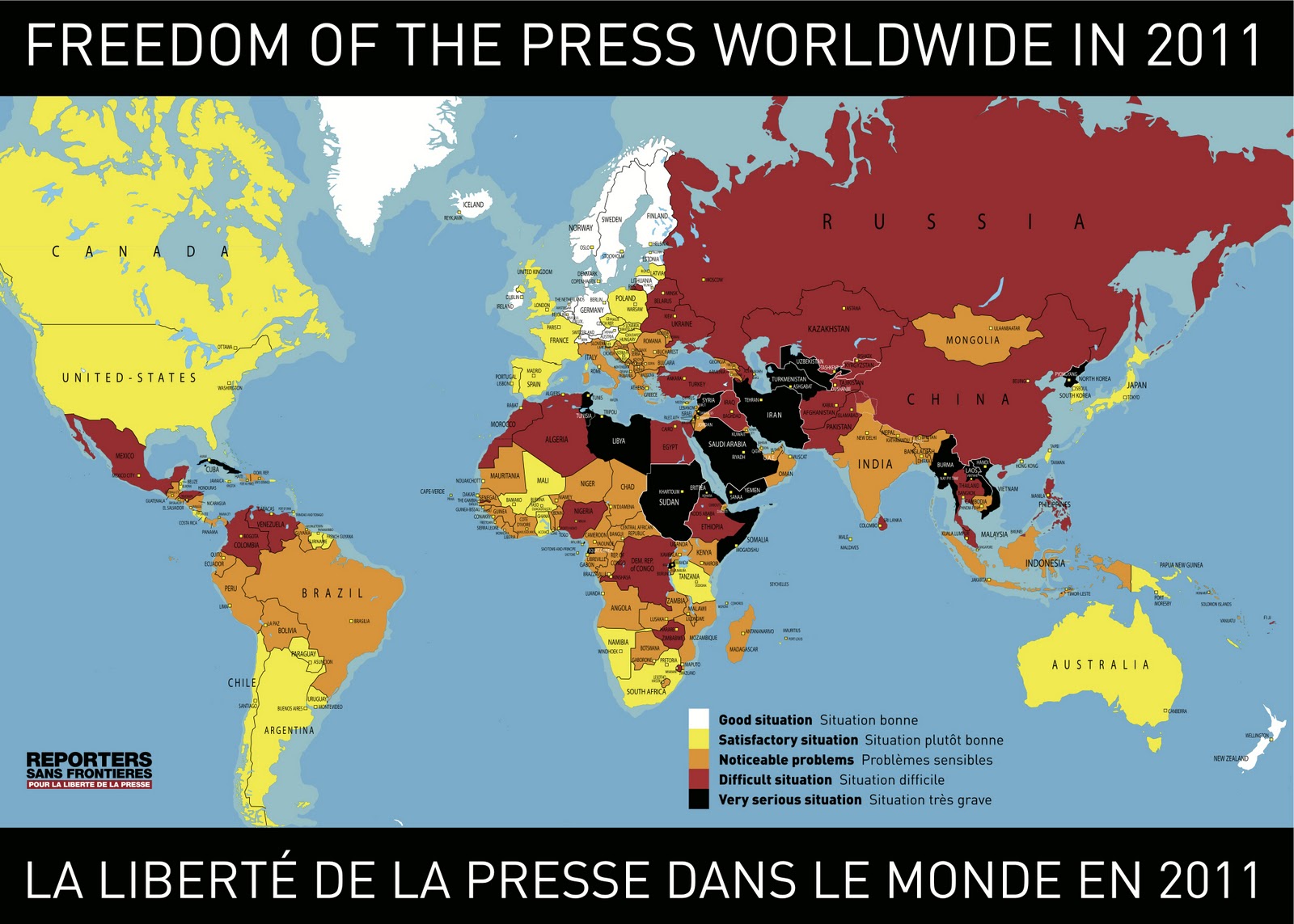Zachary Sniderman on Mashable published an interesting article titled, Just How Open Is Your Internet?. I thought the featured map looked a little bit fishy – Mongolia has less internet censorship than Sweden? Really? What does that mean? It seemed to me that there might be something missing from the account. To his credit Mr Sniderman does note
…it raises some inherent problems with defining “censorship.” For example, screening out child pornography and illegal file sharing technically registers as “censorship” even though most people wouldn’t consider that a human rights offense.
Even accounting for his concerns it still looked a bit odd to me.
So I looked up the source of the data. The map is based on an analysis published by the Open Net Initiative and is based on data from a Reporters Sans Frontières (RSF) survey. I’ve been following RSF since 2003 when they got banned by the United Nations Commission on Human Rights for being righteously indignant and upsetting some of the hypocrites on the commission. I admire their work, which I think they pull off with admirable Gallic flair.
The raw data for the above map appears to be taken from the Press Freedom Index which RSF have been publishing yearly, since 2002 (2010 pdf version). The RSF methodology is published at the bottom of this page and seems sound to my untrained eye.
The RSF survey comprises 43 questions that seek to define the freedom of the press, or lack of it, for each surveyed country. Of these 43 questions just 4 deal with the internet.
Internet and New Media
- Do the authorities control Internet service providers directly or indirectly? During this period, was there or were there (Yes/No):
- Cases of access to websites being blocked by filtering mechanisms or being closed down by the authorities? Evaluate the level of this censorship on a scale of 0 (no censorship) to 5 (total censorship).
- Cases of cyber-dissidents or bloggers being detained for more than a day? How many?
- Cases of independent websites being the target of cyber-attack or counter-information campaigns?
I can’t find the ONI methodology on their website but the map appears to be based on the answers to question 41 from the RSF survey. Even if it is based on some weighted blend of the 4 RSF internet related questions it is pretty thin evidence – Especially when you consider what is left out. Below is a map, from Vis4.net showing internet usage as a percentage of total population. Most of the countries with “no censorship” on the ONI map have very low internet penetration. None of the countries in Africa, with “no censorship”, have an internet penetration higher than 10% . I think there is an obvious lesson here. It’s not worth censoring the message if no one is listening. Unless of course you are deeply paranoid.
Ultimately the RSF survey (see map below) seems to present a far more nuanced, informative, and meaningful account. Freedom of expression is about far more than internet “censorship”. It’s not just what you can read on the internet that is important, but what you can say in any public forum , and how many people you can say it to without fear of reprisal. Its about the many ways legitimate public discourse can be controlled or intimidated. Most of the countries that RSF classifies as having a “good” or “satisfactory” situation, with respect to freedom of the press, allow some censorship of the internet. As Mr Sniderman points out this is mostly blocking of child pornography and illegal file sharing, and most people would not consider this censorship.
I think the real concern is with countries whose populations have started to adopted the internet and have passed a kind of tipping point, where most people know someone who has access to the internet, my guess would be 15% to 30% penetration. Countries with this level of internet penetration, that are classified by RSF as having a “difficult” or “very serious” situation with respect to freedom of the press, seem ripe for strife. This volatile mixture of oppression and freedom exists today in; China, Columbia, Iran, Egypt, Mexico, Sudan, Burma and Vietnam, among others.


